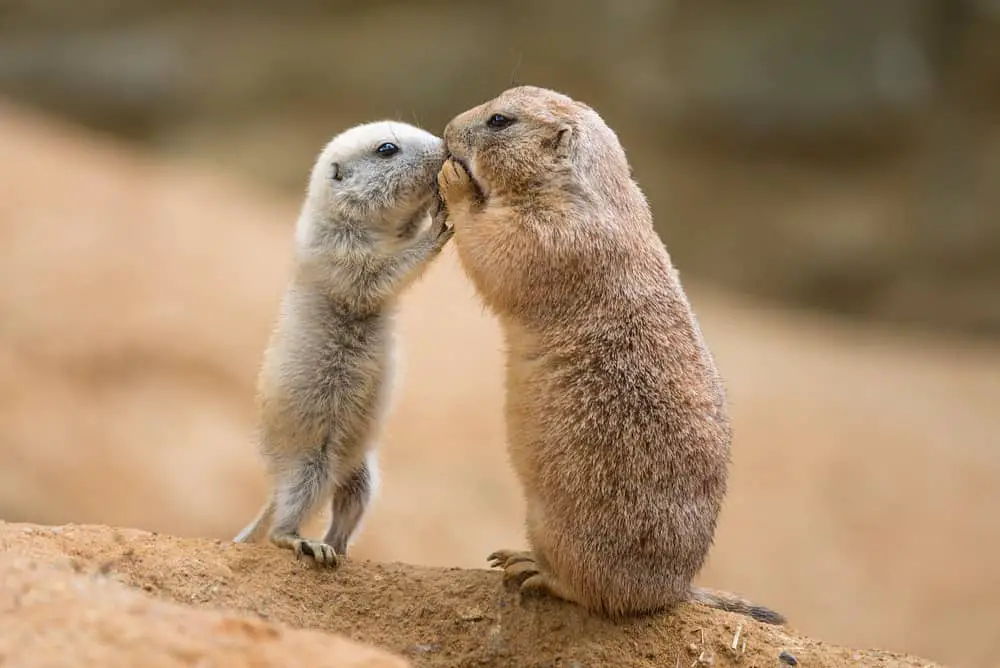
To humans, no act could be as horrific and unnatural as that of filial cannibalism. But what if the consumption of offspring was not born of malicious intent but rather a desperate act of survival, of ruthless pragmatism, and perhaps even an odd form of love?
Many species of animals exhibit filial cannibalism with or without infanticide. Inexperienced, stressed mothers are more likely to exhibit pathological cannibalism. Non-pathological filial cannibalism has been noted in many species, including rattlesnakes, wolf snails, seahorses, and squirrels.
The act of consuming one’s own young may seem counterintuitive to the survival of a species, but researchers have found that non-pathological filial cannibalism serves multiple evolutionary purposes.
Table of Contents
- Sloth Bears
- Seahorses
- Rosy Wolf Snails
- Squirrels
- Rattlesnakes
- Damselfish
- Hamsters
- Sand Tiger Sharks
- Conclusion
Sloth Bears
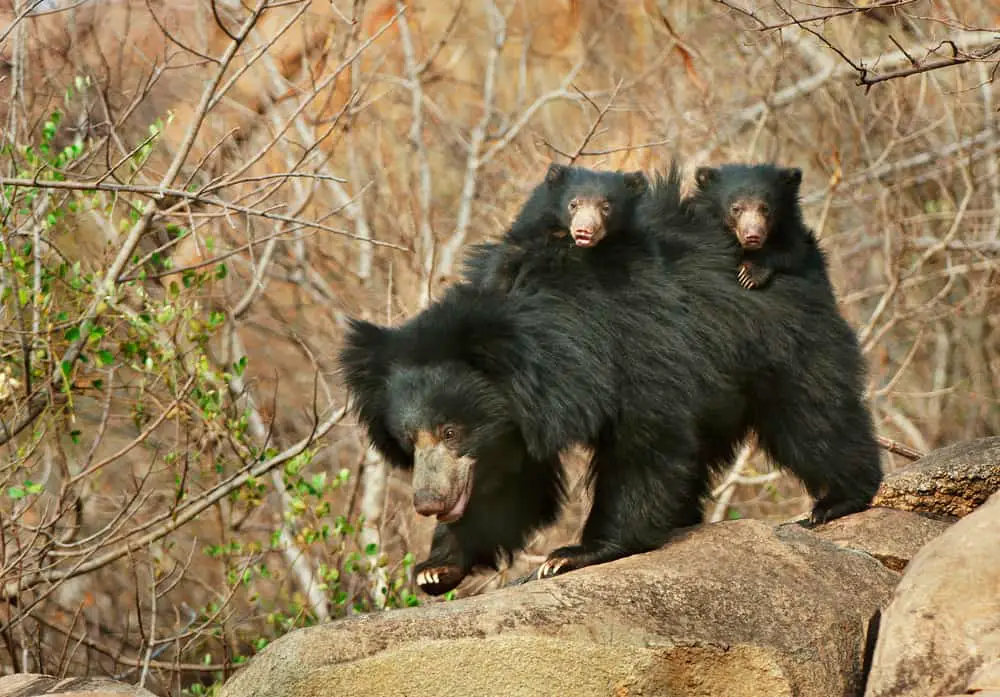
Where do wild sloth bears live: India
Sloth bears are gorgeous shaggy-coated bears, listed as being a vulnerable species. Typically, these bears dine on a diet of termites, ants and during the monsoon season, a variety of fruits and flowers are added to the bears’ diet.
The innocuous sloth bear is hardly the stuff of nightmares; however, cubs need to keep a wary eye on their moms!
Filial infanticide is relatively common amongst the sloth bear populations. First-time moms are particularly notorious for endangering their cubs, especially if the cubs are weak.
The most well-publicized account of infant cannibalism in sloth bears occurred in 2013 at the Smithsonian Washington Zoo. Khali, named after the Hindu Goddess of Destruction, gave birth to three cubs on 29 December 2013.
The first cub was sadly stillborn and immediately consumed by Khali. A week later, she killed her second cub and began neglecting her remaining baby. Zookeepers performed an autopsy on the second cub and found she had an intestinal parasite, which may have caused Khali to view the cub as weak and sickly.
The last little cub began to weaken, and fearing for her safety zookeepers, removed the cub for her safety. Eight zookeepers stepped in as foster moms for baby Remi. However, Remi’s story does not have a happy ending.
The little bear with a big personality was euthanized as a 6yr old on 2 May 2020, when she acquired a non-healing foot wound. Despite strenuous efforts to save her, her quality of life continued to deteriorate until the decision was made to let her go.
Seahorses

Where do wild seahorses live: Any ocean located in tropical or temperate zones
The seahorse is unique amongst animals in that it is the male that carries the developing babies. Seahorses have prolonged and intricate courtship rituals. Courtship and mating can take up to 8 hours and only occurs between monogamous breed pairs.
Courtship rituals are thought to synchronize the male and female movements, allowing the female to deposit unfertilized eggs into the male’s breeding pouch. Once transferred, the eggs are fertilized, and gestation begins.
Gestation lasts between 10 to 25 days, depending on the species of seahorse. During gestation, the male seahorse regulates water salinity within his breeding pouch, thus providing optimal conditions for his hundreds of growing babies.
The constant maintenance of ideal water salinity places a substantial metabolic demand upon the father. Seahorses don’t have stomachs and need to eat almost continuously to fulfill their energy requirements. Male seahorses need to consume more food when gestating than during other life stages.
During food shortages, male seahorses may swallow a few hundred of their offspring as a means of supplementing their diets and restoring the nutritional deficit acquired during gestation.
It is thought that fewer than 5 seahorse babies survive for every 1000 live births. Growing up is virtually a herculean feat when you have to watch out for strong ocean currents, predators, and your hungry dad!
Rosy Wolf Snails
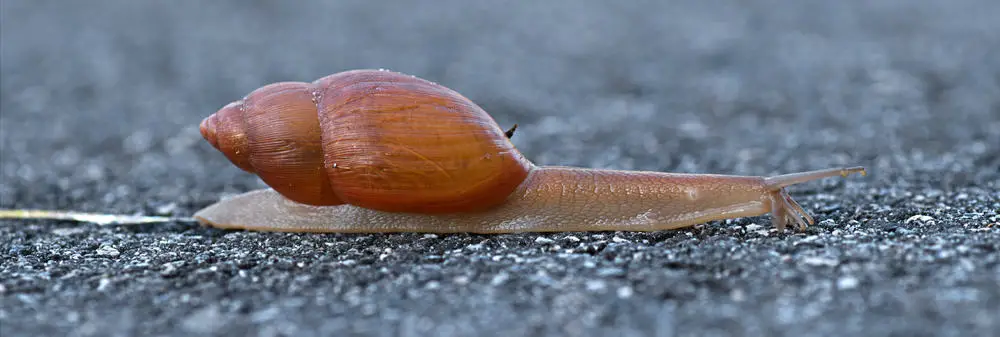
Where do wild snails live: Rosy wolf snails are common in Southern and Central America and have started spreading into the South Eastern United States of America. These snails have even found their way into many Mediterranean countries.
Snails have long been a persistent combatant of beleaguered gardeners but hardly seem to be the type of animal to make the list of species known for infanticide. I mean, does a snail even have teeth?
The rosy wolf snail is a dastardly predator snail with hostile family dynamics. The wolf snail has what appears to be three pairs of protuberant tentacles decorating its head. Two tentacle pairs are the snail’s elongated eyestalks, the second shorter pair is true tentacles, and the third pair is the snail’s overlarge lips.
The unattractively long lips are the secret to the wolf snail’s hunting prowess. The lips contain hundreds of taste buds, allowing the wolf snails to hunt smaller snails by tasting and then following their slime trails.
The wolf snail’s streamlined body and aggressive nature enable them to travel two to three times faster than other snail species, subdue these poor snails, and settle in for a nutritious snack.
The rosy wolf snail prefers to consume small, shelled snails whole but will eat larger snails in a piecemeal manner, using their ultra-sharp 1000 to 12000 microscopic teeth.
Rosy wolf snails do not differentiate between different species of snails and will happily consume other wolf snails, including their own young.
However, the young wolf snails are not quite the victims that other animal babies would appear to be. Young rosy wolf snails have been known to consume their hatched and unhatched siblings. Talk about thorny family reunions!
Squirrels
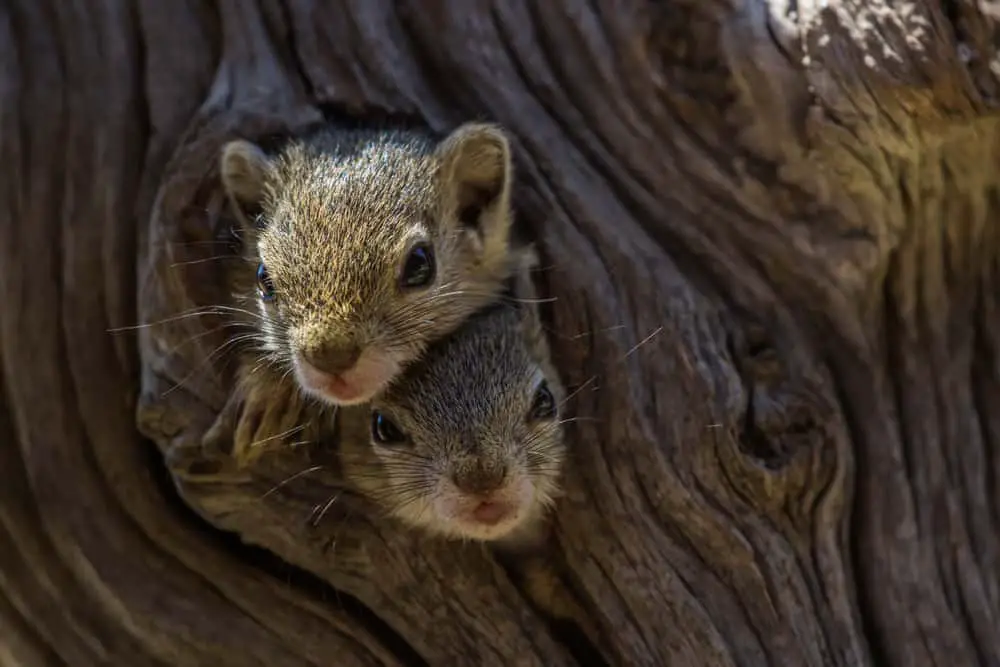
Where are wild squirrels found: With more than 270 species of squirrels, squirrels have spread far and wide throughout the world. Different squirrel species can be found on every continent except Antarctica and Australia.
The North American red squirrel is unique in its cannibalistic ways. Most animals that commit infanticide or filial cannibalism do so only when food shortages force them to find alternatives sources of nutrition.
By contrast, infanticide amongst the North American red squirrel populations increases during “Mast” years, when food sources are plentiful.
One of the main constituents of a North American red squirrel’s diet is white spruce cones produced by the local trees. Spruce trees show lifetime fluctuations in the number of spruce cones released each year. Unprecedented amounts of white spruce cones are made during mast years, much to the local squirrels’ delight.
The increased food availability enables mature females to have two litters during these bountiful years instead of the typical one litter per year.
Male and female squirrels are not monogamous during the first mating season but, once paired up, will breed with only one male during the second mating season.
The viciously sneaky males will kill pups born to the first litter. Thus, ensuring that resources are directed towards the second litter, which is the homicidal male fathers.
Cannibalistic infanticide is not exclusive to the North American red squirrel; in fact, many other squirrel species have been found to exhibit cannibalistic behavior!
Rattlesnakes
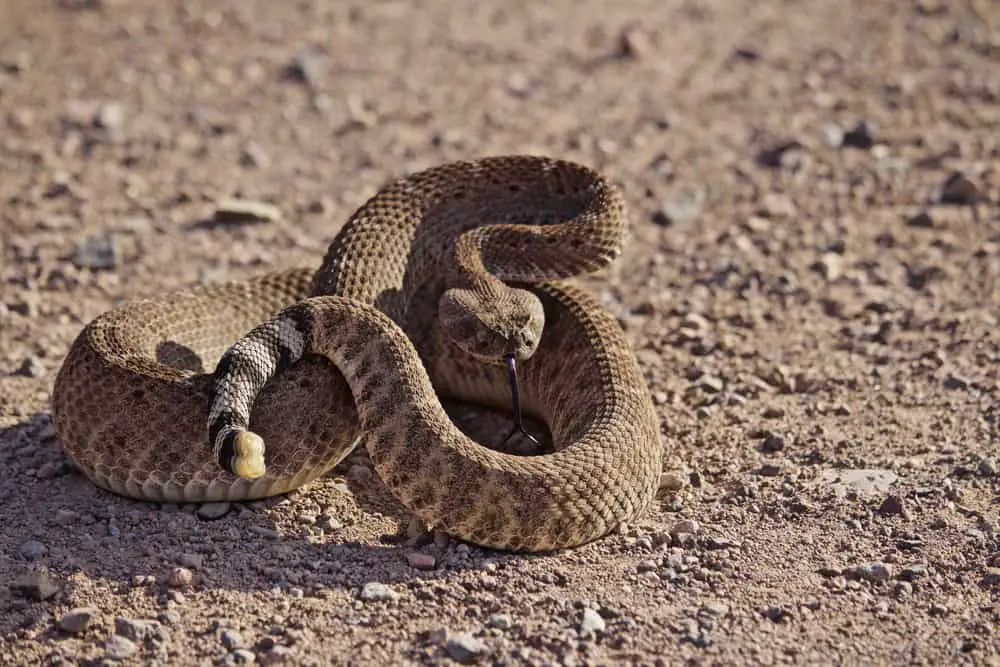
Where are wild rattlesnakes found: Rattlesnakes are commonly found in Mexico, South America, and Central America; however, they have been known to move further North than typically expected.
Filial cannibalism is a horrific fact relating to survival of the fittest; however, the shock-factor increases ten-fold when combined with infanticide.
Rattlesnakes have a reputation for deadly attacks and a coldly cruel serpentine way of moving through life. However, compared to some of the creatures accused of infanticide, the rattlesnake comes out looking like a boy scout, or should I say, girl scout!
The rattlesnake females ingest only the unfertilized eggs and dead offspring! Thus they are guilty of eating their young but not of killing them.
A study conducted in central Mexico was the first to record and research filial cannibalism amongst female rattlesnakes. The researchers observed 239 clutches laid by 190 female rattlesnakes.
The biologists found that 68% of the females ate part or all of their dead offspring shortly after birth; the remaining females showed no cannibalistic behavior. Birthing can last between 3 to 5 hours and typically results in a clutch of 10 to 20 live young.
The researchers found that female rattlesnakes were more likely to consume their young when:
- Giving birth to large clutches
- Giving birth during the end of July, i.e., late breeding season
- Giving birth while in captivity – captivity increases the female’s stress levels.
The researchers hypothesized that females eat their non-viable young to recuperate vital nutrients lost during gestation. By consuming the bodies of dead babies, the female does not need to risk hunting while in a weakened state.
Damselfish
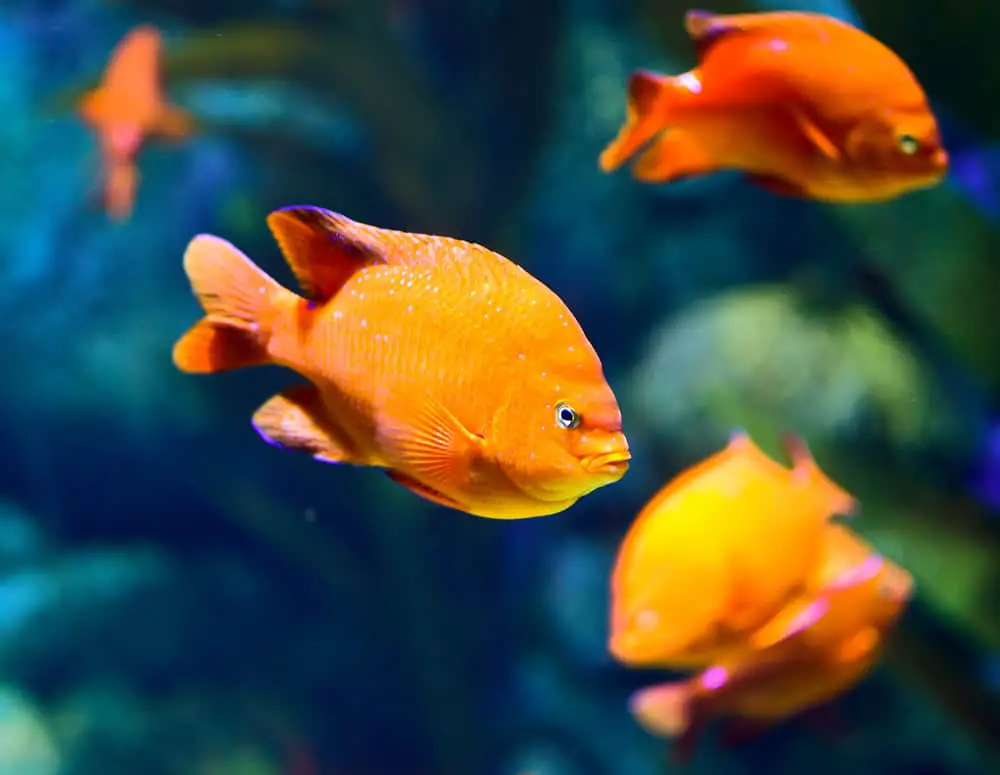
Where are wild damselfish found: The small brightly colored damselfish are found primarily in tropical coral reefs but may also be found in subtropical and temperate waters. A few species of damselfish even make their homes in brackish and freshwater ecosystems.
During spawning season, the stomach of the male damselfish shrinks in response to their breeding and nest guarding duties. The high rate of egg cannibalism and adaptive nature of the damselfish made this an ideal species to study with regards to filial cannibalism.
During a 2002 study, researchers investigated which variables affect filial cannibalism amongst damselfish:
- The amount of food given to male damselfish
- The nest’s egg density
- Water-oxygen concentrations
The biologists found that starved damselfish consumed more of their unborn offspring but preferentially selected young undeveloped eggs. When the males were offered an excess of food, filial cannibalism was reduced but not eradicated.
The researchers then investigated the effects of the nest’s egg density and oxygen concentration. Controlling these variables gave rise to the currently accepted hypothesis of filial cannibalism in damselfish.
Damselfish fathers guarding densely populated nesting sites in oxygen-depleted waters showed significantly more cannibalism than their counterparts protecting sparsely populated nesting sites located in oxygen-rich water.
It is thought that the selective cannibalism of randomly placed eggs improves overall offspring survival. Thus, fathers who practice selective cannibalism had greater reproductive success as more offspring survived than would have if they had preserved the entire nest.
Hamsters
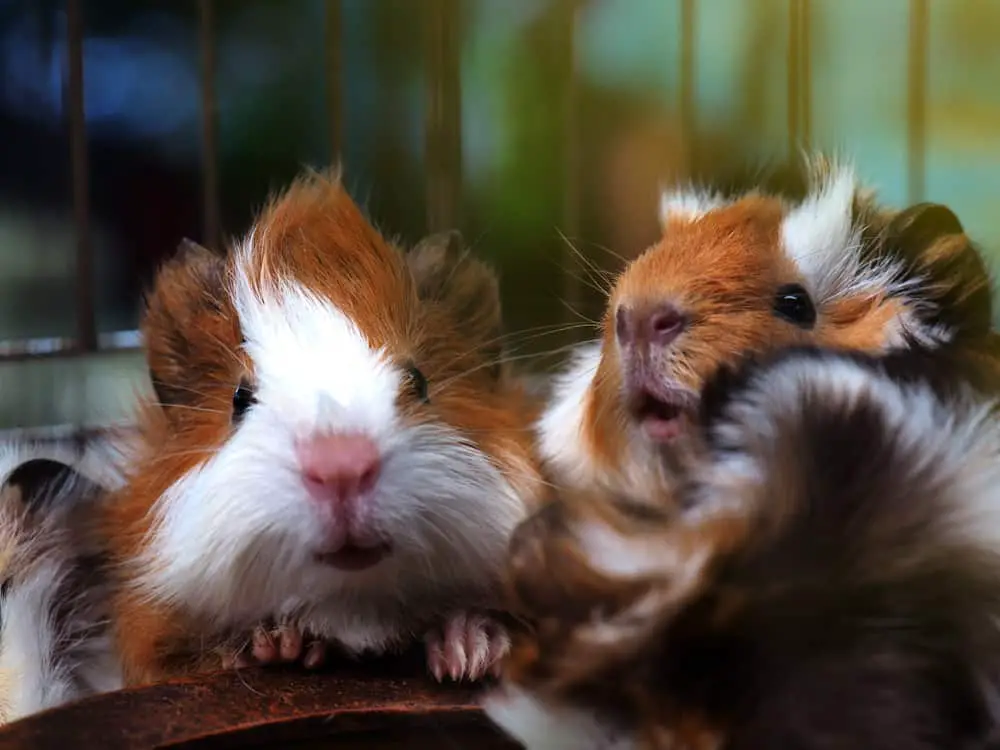
Where are wild hamsters found: In warm, dry locations, such as Syria, Northern China, Greece, and Romania.
Hamsters are popular as cute, fuzzy pets. The constantly squeaking wheel may drive parents crazy, but the chubby-cheeked hamster is a staple pet for most young children.
The herbivorous hamster may seem to be the last animal expected of eating her young, but in reality, filial cannibalism occurs more often amongst hamsters than one would predict.
Hamster moms will frequently sacrifice one or more of their young as a means of reducing litter size to a size that she feels she can manage. The optimal litter size is individually determined and is frequently related to stress caused by:
- The mother’s experience, i.e., new moms are often more stressed and anxious than experienced moms.
- The mother’s temperament, i.e., some hamsters are more anxious than others.
- Availability of food, water, and space
- The amount of time given to bonding and scent recognition
If your hamster has a litter of pups, it’s essential to provide abundant food and water. It is also vital that you keep interaction with the mother and her litter to a minimum for the first week or two.
Handling the pups, especially during the first few days, may cause the mother to fail to bond with and recognize the scent of her offspring. Playing with the kits, taking photos, even uncovering the kits to watch them may make the new mom feel overly stressed, resulting in the death of one or all of the pups.
Sand Tiger Sharks
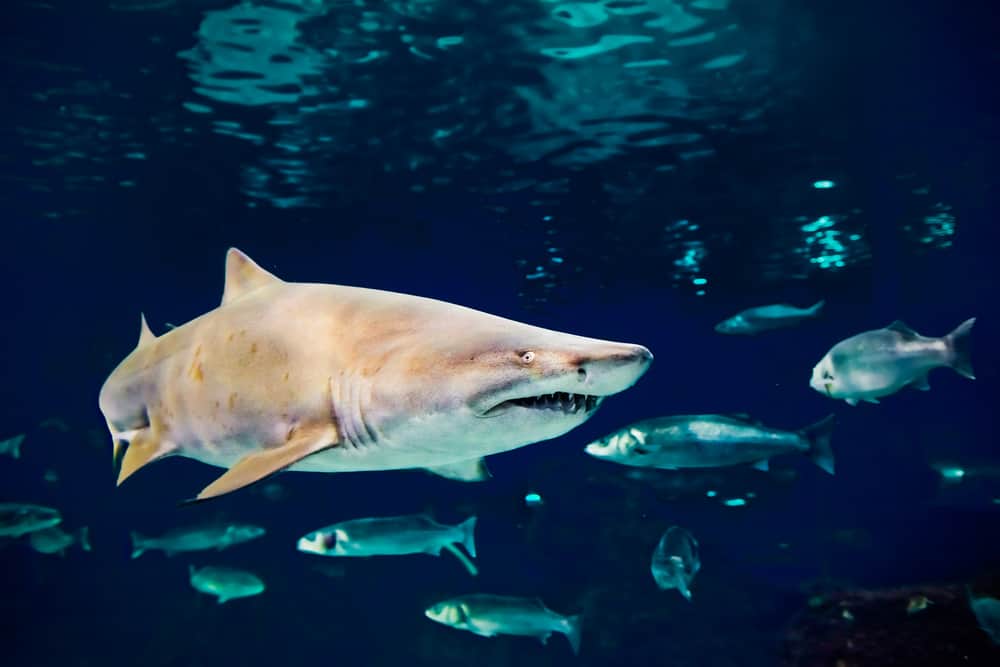
Where are wild sand tiger sharks found: The Adriatic seas and the Pacific, Atlantic, and Indian oceans.
If sand tiger sharks were inclined to get together for family reunions, the campfire stories would be hilariously macabre. I can imagine a shark sitting there going, “So you remember Uncle Benny… oh wait, I ate him before we were born – friendly chap and quite tasty!”
Sand tiger sharks have a hazardous journey to adulthood, beginning from the time of conception. Sand tiger shark pups reliably exhibit in-utero fratricide. Female sharks have two uteruses and mate with multiple males each breeding season allowing 5 to 7 eggs to be fertilized.
As the fetuses grow, they will begin to swim, even swimming from one uterus to the other! These precocious babies make mammalian fetuses seem positively sedentary. As they grow, these baby shark pups will begin to feast on their brothers and sisters; non-related siblings are always consumed first.
The female will give birth to the largest, murderous pup. The consumption of siblings is thought to provide the birthed offspring with a greater chance at survival. The constant in-utero swimming and diet of sibling pups ensure that these pups are born larger than many other species of sharks.
However, the pup’s journey of survival is not guaranteed at birth. These pups do not receive parental protection and may find the tables turned as they feature as “catch of the day” for adult sharks!
Conclusion
Filial cannibalism may be pathological in origin or normal, non-pathological behavior. New mothers and stressed mothers are more likely to exhibit pathological infanticide, as was the case with Khali.
As counterintuitive as it may seem, non-pathological filial cannibalism is an effective survival strategy:
- It allows malnourished mothers to recuperate lost nutrients, enabling them to survive and reproduce again.
- It ensures only the strongest and healthiest of the babies survive.
- It ensures that scarce resources are directed towards the offspring most likely to survive.
- It guarantees the parentage of offspring in cases where females mate with multiple males.
Sources:
PBS News Hour: Why some animals eat their young
Smithsonian: Female Sloth Bear Dies at Smithsonian’s National Zoo
Smithsonian National Zoo: Sloth Bear
One Kind Planet: Seahorse
US Fish and Wildlife Services: Seahorses
National Geographic: Seahorse Fathers Take Reins in Childbirth
The Living World of Molluscs: The Rosy Wolf Snail (Euglandina rosea)
Insider: North American red squirrels commit infanticide.
University of Alberta: Male squirrels kill offspring of rivals in years when food is plentiful, study shows
Research Gate: Cannibalism of nonviable offspring by postparturient Mexican lance-headed rattlesnakes, Crotalus polystictus
Science Daily: Cannibalism Among Rattlesnakes Helps Females To Recover After Birth
Forbes: Shark Cannibalism: It’s A Thing And It Just Got Weirder.
Smithsonian Magazine: Baby Sand Tiger Sharks Devour Their Siblings While Still in the Womb
The Royal Society Publishing: Filial cannibalism improves survival and development of beaugregory damselfish embryos
Research Gate: Pup cannibalism: One aspect of maternal behavior in golden hamsters
Pets on Mom: What Does it Mean When the Hamster Mom Kills the Babies
